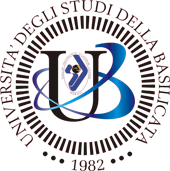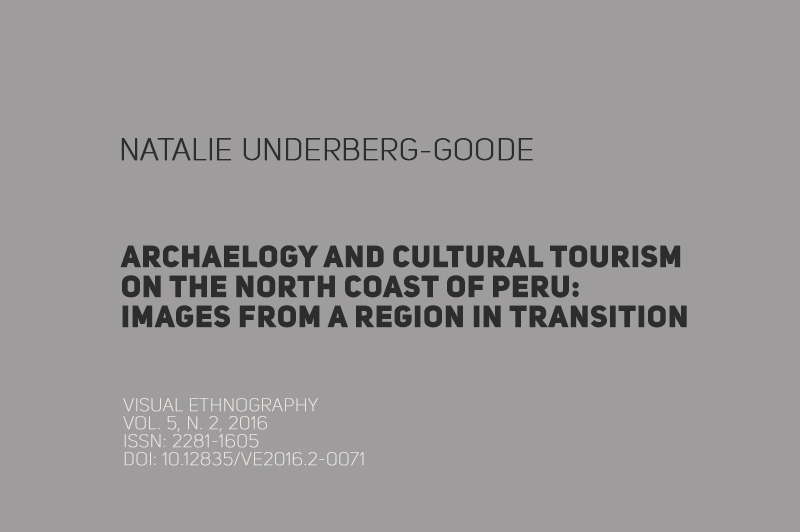-
Natalie Underberg-Goode
is Associate Professor of Digital Media and Folklore (School of Visual Arts and Design, UCF). She is author (with Elayne Zorn) of the book Digital Ethnography: Anthropology, Narrative, and New Media (University of Texas Press, 2013), as well as more than 20 articles, book chapters, and conference proceedings on digital heritage and narrative. Underberg-Goode has been PI or co-PI on research and teaching grants totaling nearly $200,000. Her research has been presented at more than 20 national and international conferences, including the Bilan du Film Ethnographique seminar in Paris, France and the American Folklore Society.
-
The North Coast of Peru is a region primarily known for its impressive archaeological sites, such as the Royal Tombs of Sipán, Huacas del Sol y de la Luna, and Chan Chan, and the achievements of the ancient Moche culture. In recent years heritage tourism has rapidly developed on the North Coast in part to provide tourists with more diverse and in-depth tourism experiences. These archaeological discoveries have thus contributed to new opportunities for community development and improved quality of life, as well as to a changing understanding of the history and cultural heritage of the region.
My research focuses on traditional arts and programs that have resulted from archaeological investigation and efforts to leverage the area’s indigenous culture in tourist development. By focusing on both traditional arts and archaeological investigations, my goal is to show how they are part of a larger re-imagining of the historical past and cultural heritage of the region. In these photographs, in part, I am trying to show scenes from the life of a region experiencing the effects of the development of the Moche Route touristic corridor.
One of the goals of the Moche Route has been to encourage tourists to stay longer, through uniting businesses and expanding to include more activities like cuisine, handicraft production, and homestay tourism. Thus places like the Campiña de Moche, a community in the Moche Valley near the Huaca de la Luna archaeological site, have come to be focus of efforts to identify and leverage historical ties between the current inhabitants and the culture of the ancient Moche discovered through excavations. In a sense these communities provide a living culture to complement the archaeological discoveries.
[ > NEXT PAGE] -
The Huaca de la Luna project has been proactive in this effort to identify and promote ties between the current and ancient mocheros. There are artists who claim descent from the Moche, in particular the García brothers, a family who share facial features identical to those featured in the famous Moche face pots.
In Chiclayo/Lambayeque, the archaeological sites and site museums such as Sicán and Museo Bruning have worked with NGOs and local artists to develop handicraft, culinary, and homestay tourism. A focus of these efforts has been the revitalization of native cotton in the rural community of the Bosque de Pomac sanctuary. The Pomac Forest is one of the last dry forests in the world, and it was there, despite its hostile environment, that the Sicán/Lambayeque culture evolved. Native cotton, although cultivated for over 5,000 years, had been banned until 2008; now it, along with loche (a native squash), is the focus of revitalization efforts.
[ > NEXT PAGE] -
Further north and outside the so-called Moche Route touristic corridor, Piura is a region distinguished by its mixture of African, Spanish, and indigenous (particularly Tallán and Vicús) cultural heritages. Piura’s beaches are important, as well as its proximity to Ecuador and the excellence of its cuisine (in particular, seafood like the famous raw marinated fish dish ceviche). Piura handicrafts have been a focus of tourist development in the region. Catacaos, known for its silver and gold jewelry, straw hats, and wood, leather, and clay crafts, is arguably the handicrafts capital of the area. Probably the best-known handicraft product in Piura is the pottery of Chulucanas, which was revived in the 1970s. The technique used in making Chulucanas pottery represents a recovery of indigenous techniques from the Tallán and Vicús cultures, combined with influences from more modern pottery styles. A challenge local potters face is that many tourists do not make it all the way out to the actual workshop in Chulucanas, but buy what is apparently Chulucanas pottery in shops in Catacaos or other places where more folk art is sold. Nevertheless, handicraft production in this region does provide income and employment to local residents, especially in places like Narihualá, known for its straw weavings.
Whether mediated through archaeological excavations or attractions to the beauty of local ecology, cultural heritage tourism on the North Coast of Peru is a complex story, one that is still being written. -
Abstract
This photo essay explores cultural tourism on Peru’s North Coast, a region primarily known for its impressive archaeological sites, such as the Royal Tombs of Sipán, Huacas del Sol y de la Luna, and Chan Chan. Focusing specifically on the impact of heritage tourism on local communities, the photo essay illustrates how archaeological discoveries have contributed to new opportunities for community empowerment and improved quality of life as well as to a changing understanding of the history and cultural heritage of the region.



























